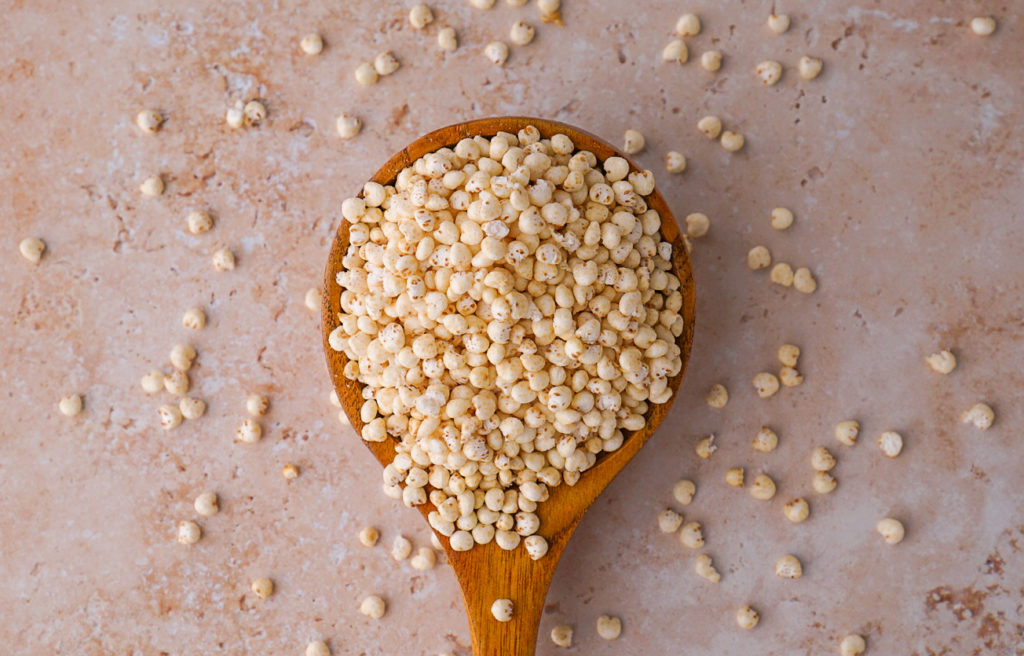5 Health Benefits of Millet
Millet is an ancient grain that provides many health benefits and can be used in a variety of ways when cooking. As demand grows for more gluten-free options, millet has moved up to the 6th most popular cereal grain in the world! Millet is rich in dietary fibers, antioxidants, phytochemicals and polyphenols which accounts for its growth in popularity in western cultures.

What is millet?
Millet doesn’t refer to a single type of grain, rather it refers to a small group of seeded grasses. It was originally domesticated in Northern China in 6000 BC. In the United States, it is most commonly used to feed pets, livestock, and birds but for other regions like Asia and Africa, millet is a daily food staple. A major perk of millet is that it has a low carbon footprint since it can withstand high temperatures without much water. There are four different types of millet grown in the United States, foxtail, pearl, proso, and Japanese Barnyard. However, proso is the only type available for human consumption.
Are there any risks?
One of the risks of millet is that it contains goitrogens. These are naturally occurring substances that can interact with the thyroid gland. Some other goitrogenic foods include brussel sprouts, kohlrabi, turnips, rutabaga, radishes, cabbage, kale, and cauliflower. However, just because millet contains goitrogens doesn’t mean you should avoid consuming it.
One study showed that the chances of goiter were higher in those who had 75% of their calories coming from millet when compared with those who had 37% of their calories coming from millet. If you suffer digestive issues or hypothyroidism, check with your Dietitian to see if it’s appropriate to include millet in your diet. Moderation is key to supporting a healthy thyroid, and lack of iodine still remains the main cause of thyroid dysfunction.
Health Benefits of Millet
1. Rich in Antioxidants
Millet contains phytochemicals like phenolic acids which are rich in antioxidants. They ward off damage to cells from free-radical oxidation reactions.
2. May Help Control Blood Sugar
Millet is a low glycemic index food meaning it raises your blood sugar slowly and gradually instead of spiking it. It’s rich in fiber and protein which work together to slow the absorption of glucose into the cells.
3. May Help With Weight Loss:
One study showed that when Millet is consumed for as little as 21 days up to 4 months there was a 7% reduction in BMI. This could be due to fiber and protein working together to help you feel more satiated during meals. The blood sugar-balancing effects of millet can also help you to feel satisfied for longer periods between meals, preventing excess snacking.
4. Lowers Triglyceride Levels and Increases HDL
Results from 19 studies showed that Millet helped to reduce levels of triglycerides, LDL, and VLDL by 9%. Four studies showed that millet helped to bring triglyceride levels down to <200 and <150mg/dl. There was also a 6% increase in HDL.
5. Supports a Gluten Free Diet
Millet is a nutritious grain that can support those who feel limited by a gluten-free diet. Processed gluten-free breads are often carbohydrate-dense and contain very little nutrition. Ancient grains like millet are a great way to add nutrient-dense carbohydrates to your diet that will support your health.
Excited to add more millet into your routine? Stock up on Arrowhead Mills Puffed Millet Cereal and Arrowhead Mills Organic Gluten Free Millet Flour.
 VIEW ALL PRODUCTS
VIEW ALL PRODUCTS 
